Cone Rod Retinal Dystrophy: In-Depth Analysis of a Complex Condition
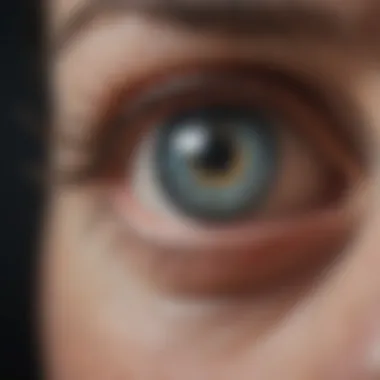
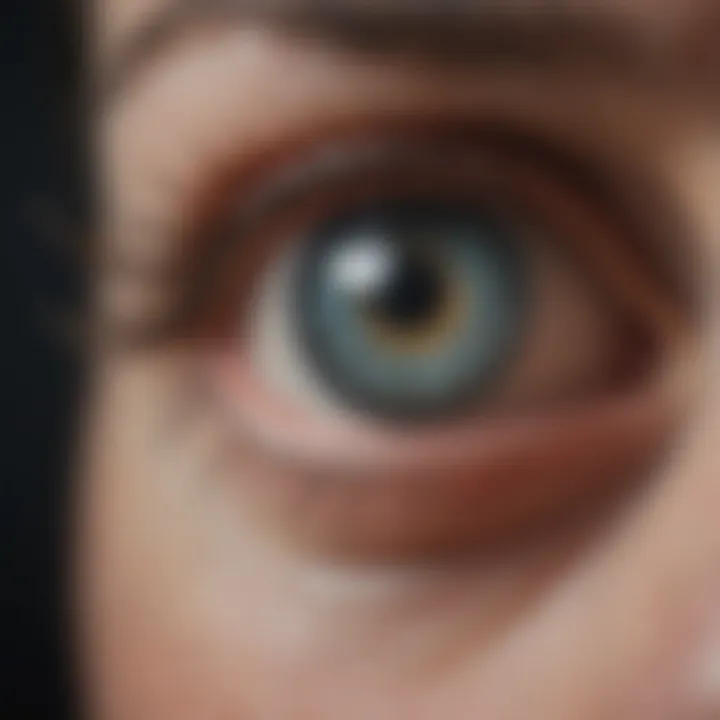
Intro
Cone rod retinal dystrophy stands at the intersection of vision science and genetic exploration. It is a condition that involves the gradual deterioration of photoreceptor cells in the retina, specifically the cones and rods. These cells are responsible for converting light into signals that the brain interprets as images. Without these critical players, visual perception becomes increasingly compromised, impacting an individual’s quality of life.
Understanding this condition is not just an academic exercise; it resonates deeply with those affected and their families. Cone rod retinal dystrophy manifests in various ways and can lead to central vision loss, difficulty in dim light, and a sometimes overwhelming array of symptoms that may adapt and change over time. Given its intricate nature, the quest for comprehensive knowledge about the etiology, pathophysiology, clinical features, and available treatments is ongoing.
This article seeks to shed light on these key facets, pulling together findings from across the landscape of current research. By synthesizing relevant data, this exploration serves to equip students, researchers, and science buffs with the insights needed to navigate this complex arena.
"The journey of understanding cone rod retinal dystrophy demands curiosity and tenacity, as its unfolding narrative is filled with possibilities for future advancements."
The relevance of this topic cannot be overstated. With advancements in genetic research, understanding the underlying causes of the disease is becoming clearer, paving the way for targeted therapeutic strategies. Thus, whether one is a student of ophthalmology or simply an interested individual wishing to expand their knowledge, the exploration of cone rod retinal dystrophy is crucial.
Through detailed analysis, this article will address methodologies for examining the disease, highlight innovative treatment options, discuss future directions in research, and ultimately provide a cohesive understanding of this multifaceted condition.
Preface to Cone Rod Retinal Dystrophy
The topic of cone rod retinal dystrophy warrants an in-depth discussion due to its profound implications on vision and overall quality of life for those affected. Understanding this complex condition helps lay the groundwork for both academic pursuits and patient care. It is not just a matter of defining the disease; it involves examining its roots, potential complications, and the nuances of how it impacts individuals differently.
Highlighting the intricacies of cone rod retinal dystrophy opens up pathways to appreciate the intersection of genetics, cellular function, and visual acuity. Individuals suffering from this retinal disorder can experience a range of symptoms that make daily tasks challenging. Therefore, raising awareness about how the condition manifests and why it affects certain populations more than others is essential.
Defining Cone Rod Retinal Dystrophy
Cone rod retinal dystrophy is a rare genetic disorder primarily characterized by the degeneration of photoreceptors in the retina, namely cones and rods, leading to progressive vision loss. Cones are responsible for color vision and detail, while rods facilitate vision in low light conditions. The loss of these critical cells can lead to significant visual impairment, making an accurate definition of the disorder especially important for diagnosis and management.
As we define this condition, it is vital to note that its progression can vary widely among individuals. Some may experience gradual changes in their sight, while others encounter sudden and severe declines. The genetic component of this ailment can, in essence, determine the severity and pace of the condition, hence affecting treatment plans and patient outcomes.
Epidemiological Insights
When it comes to epidemiological data surrounding cone rod retinal dystrophy, understanding its frequency and demographic patterns is crucial. Studies show that it affects both men and women, presenting at various stages of life. Although the overall prevalence is low, certain ethnic groups might be more impacted, point toward potential genetic predispositions.
Research has unveiled that conditions like these are often underreported, leading to a lack of comprehensive data. For instance, individuals may not seek medical advice for mild symptoms, delaying diagnosis and treatment.
Key takeaways from existing epidemiological studies include:
- The disorder typically emerges in childhood or early adulthood, although some may notice symptoms later in life.
- Geographic distribution varies; certain areas experience higher rates, indicating potential environmental or genetic factors at play.
- Awareness among healthcare providers is minimal, which leads to missed diagnoses.
In sum, delving into the definitions and epidemiological perspectives of cone rod retinal dystrophy encourages a more profound understanding of its impacts and the relevance of early detection, ultimately sculpting future research and therapeutic approaches.
Pathophysiology of Cone Rod Retinal Dystrophy
The pathophysiology of cone rod retinal dystrophy is a critical aspect of understanding this complex condition. It involves exploring the underlying biological mechanisms that lead to the degeneration of photoreceptor cells in the retina. Recognizing how these processes contribute to the clinical manifestations of the disease can help refine diagnostic methods and guide therapeutic interventions. The genetic, cellular, and molecular frameworks define not just the progression of the disease but also the potential targets for treatment.
Genetic Underpinnings
The genetic factors behind cone rod retinal dystrophy are multifaceted. Various genes are implicated, and their mutations contribute to the functional decline of photoreceptors. One notable gene associated with this disorder is the USA gene, which encodes the usherin protein. Alterations in this gene can disrupt the structural integrity necessary for photoreceptor survival. Notably, this condition can display an autosomal recessive pattern, highlighting the importance of both parental genetic contributions. Understanding these genetic nuances can allow for more personalized approaches to management.
Cellular Mechanisms
The cellular mechanisms responsible for cone rod retinal dystrophy encompass several critical processes, including how phototransduction is disrupted, mitochondrial dissension occurs, and oxidative stress develops. Each of these factors springs from both genetic and environmental interactions that can ultimately influence the overall health of the retina.
Phototransduction Disruption
Phototransduction is the process by which photoreceptor cells convert light into electrical signals. In cone rod retinal dystrophy, this pathway is fundamentally altered. The key characteristic of phototransduction disruption is often represented by the malfunction of specific proteins involved in the phototransduction cascade, such as opsins. This dysfunction results in impaired vision and contributes significantly to the adaptation difficulties many patients experience. Therefore, understanding this disruption is crucial, as it lays the foundation for potential therapeutic avenues aimed at restoring normal function, such as gene therapy, which is showing promise in experimental settings.
Mitochondrial Dysfunction
Mitochondrial dysfunction plays a pivotal role in the disease process. The mitochondria, responsible for energy production, become compromised in cone rod retinal dystrophy, leading to reduced ATP availability. This situation manifests notably in photoreceptors, which have high energy demands. A key characteristic of this dysfunction is the increased production of reactive oxygen species, leading to cytotoxic effects. This aspect is significant because targeting mitochondrial health could hold potential therapeutic benefits, such as the use of antioxidants to mitigate cellular damage. Addressing mitochondrial health might offer a unique pathway to preserving photoreceptor function.
Oxidative Stress
Oxidative stress occurs when there is an imbalance between free radicals and antioxidants in the body. In the context of cone rod retinal dystrophy, this is a critical aspect contributing to cellular degeneration. The accumulation of oxidative damage can lead to cellular dysfunction, apoptosis, and ultimately, vision loss. A key characteristic here is the role played by iron and other metal ions that may exacerbate oxidative stress in retinal cells. Exploring the pathways and mechanisms involved in oxidative stress is beneficial as it opens avenues for interventions aimed at enhancing the body's antioxidative capacity with dietary modifications or pharmacological support.
"Understanding these cellular mechanisms is essential, as it forms the blueprint for potential intervention strategies that could alter the course of disease progression."

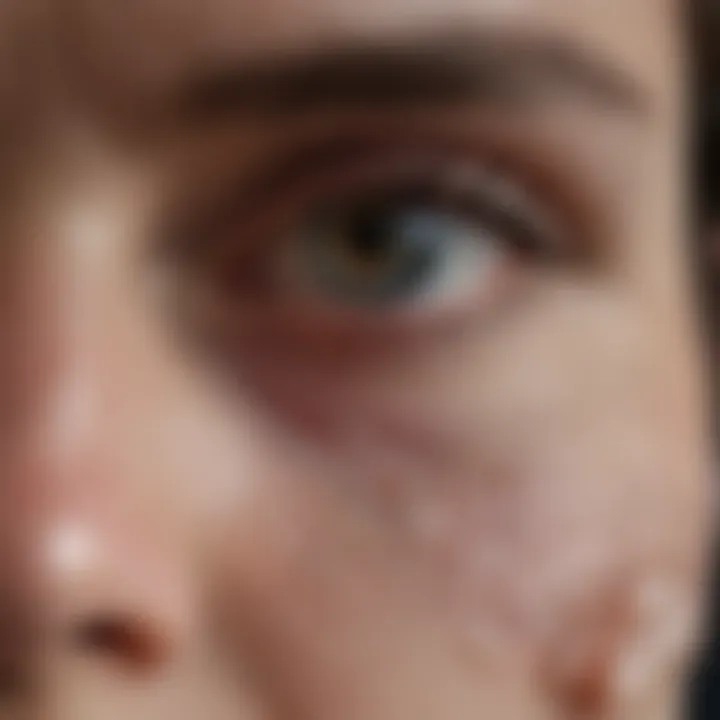
In summary, exploring the detailed workings of pathophysiology in cone rod retinal dystrophy provides a window into potential interventions. Genetic factors lay the groundwork, while the cellular mechanisms, including phototransduction disruption, mitochondrial dysfunction, and oxidative stress, serve as focal points for therapeutic exploration. This layered understanding not only elucidates the complexity of the condition but also reinforces the importance of targeted research and treatment strategies.
Clinical Manifestations
The clinical manifestations of cone rod retinal dystrophy are crucial not only for diagnosing the condition but also for understanding its implications on the quality of life of those affected. This section dives into how these manifestations can lead to significant challenges in daily activities, social interactions, and even mental well-being. The symptoms serve as a window into the underlying genetic and cellular disruptions occurring in the retinal cells.
Visual Symptoms
Photophobia
Photophobia, or light sensitivity, is a striking symptom experienced by individuals with cone rod retinal dystrophy. It refers to an increased sensitivity or discomfort in bright light conditions, often causing individuals to squint or avert their eyes when exposed to sunlight or other strong light sources. It’s a crucial characteristic because it directly impacts the daily experiences of those living with the condition. Finding places with even lighting or wearing sunglasses becomes a necessity rather than a choice.
A unique feature of photophobia lies in its varying degrees, which can oscillate from mild discomfort to extreme sensitivity that profoundly disrupts normal activities, such as working on computers or engaging in outdoor activities. This ambiguity of experience also complicates the communication between patients and healthcare providers regarding the severity of their condition.
Color Perception Changes
Color perception changes are a defining feature in cone rod retinal dystrophy patients. These alterations can manifest as difficulty distinguishing between similar colors or a reduction in the overall vibrancy of colors. This symptom isn’t merely a trivia matter; instead, it shapes a person’s interaction with their environment. The key characteristic here is that color perception is not only about aesthetics; it can affect daily choices, from clothing decisions to recognizing traffic signals.
A notable aspect of color perception changes is their gradual progression, which can lead to frustration and embarrassment for those affected. Unlike more cut-and-dry symptoms, color changes might not be understood by outsiders, making it a complex arena in terms of emotional support and validation.
Night Blindness
Night blindness is another hallmark sign associated with cone rod retinal dystrophy and one that can significantly alter a patient’s lifestyle. Sufferers often experience trouble seeing in low-light conditions or darkness, making typical nighttime scenarios, like driving or navigating through dimly lit spaces, exceedingly risky. The insidiousness of night blindness can trap individuals in a cycle of avoidance, inadvertently leading to social isolation.
What makes night blindness intriguing is the psychological aspect tied to it. Many individuals find themselves grappling with anxiety stemming from fear of navigating unfamiliar environments after dark. As such, this symptom brings to the fore the importance of comprehensive management strategies that not only address the physical but also the emotional ramifications.
Associated Systemic Conditions
Cone rod retinal dystrophy does not appear in isolation. Various systemic conditions might accompany the visual symptoms, ranging from syndromic presentations to other ocular anomalies. Understanding these associations can provide greater clarity in diagnosis and management. The presence of systemic conditions may dictate more extensive care approaches and influence the outcomes for individuals living with the disorder. Building a nuanced understanding of this interplay ensures better screening advice and management pathways, enhancing overall quality of life.
Diagnostic Approaches
The identification and understanding of Cone Rod Retinal Dystrophy hinge significantly on effective diagnostic methods. The strategies employed for diagnosis not only assist in confirming the presence of the condition but also aid in delineating the extent of the disease. Therefore, having a grasp of the various diagnostic approaches is crucial for healthcare professionals in tailoring appropriate therapeutic interventions.
Clinical Examination Techniques
Fundoscopic Evaluation
Fundoscopic evaluation stands out as a pivotal tool in the early detection of alterations in the retina. It enables the clinician to visualize the optic nerve, blood vessels, and overall retinal architecture with clarity. This examination is particularly beneficial for identifying characteristic symptoms of Cone Rod Retinal Dystrophy, such as changes in the fundus that signify photoreceptor degeneration.
One of the key characteristics of fundoscopic evaluation is its non-invasive nature, allowing for a thorough examination without the need for potentially discomforting procedures. Its popularity in clinical circles stems from the immediacy it provides in assessing retinal health. A unique feature is the ability of the examiner to observe the responses of the retina to different light conditions.
However, it is also important to note that fundoscopic evaluations have certain limitations. For instance, its effectiveness can sometimes be hindered by media opacities that obscure the view. Ultimately, while the fundoscopic evaluation is a valuable tool, it should be integrated with other diagnostic methods for a more comprehensive understanding of the condition.
Visual Field Testing
Visual field testing plays a crucial role in assessing the extent of visual impairment associated with Cone Rod Retinal Dystrophy. This examination quantifies peripheral vision and visual acuity, which are often affected in individuals with this hereditary disorder. The tests provide insight into how the disease has impacted visual processing, allowing clinicians to develop effective treatment strategies.
A remarkable aspect of visual field testing is its quantifiable results. It provides numerical data for comparison over time, helping track disease progression. This characteristic makes it a favored method among practitioners who seek to understand variations in patient symptoms more precisely. The unique feature of detecting "blind spots" or regions of decreased sensitivity enhances its value in diagnosing retinal disorders.
Nevertheless, there can be circumstances where patient compliance and understanding during the testing might affect results. Additionally, conditions such as anxiety can influence a patient's performance during the assessment. Thus, while powerful, visual field testing is best used in conjunction with additional diagnostic techniques for a holistic perspective.
Advanced Imaging Strategies
Optical Coherence Tomography
Optical Coherence Tomography (OCT) is an advanced imaging modality that revolutionizes the evaluation of retinal conditions. It offers high-resolution cross-sectional images of the retina, allowing for visualization of the layers of the retina and their corresponding thicknesses. For Cone Rod Retinal Dystrophy, OCT can reveal specific changes in the photoreceptor layers that indicate disease progression, helping inform treatment strategies tailored to the individual patient.
A standout feature of OCT is its ability to visualize the microstructural details of the retina without the use of any invasive procedures. This characteristic makes it a beneficial choice not only for initial diagnosis but also for ongoing monitoring of disease progression. However, one of the challenges with OCT is that it may not always provide comprehensive information about functional aspects of the retina alone. Thus, incorporating OCT findings with other assessments provides a more complete clinical picture.
Electrophysiological Assessments
Electrophysiological assessments, such as electroretinography (ERG), are vital in evaluating the functional status of the retina. These tests measure electrical responses from retinal cells, offering insights into how well the photoreceptors are functioning. For individuals with Cone Rod Retinal Dystrophy, these assessments enable clinicians to quantify the extent of rod or cone dysfunction, which is essential in both diagnosing and managing the condition.
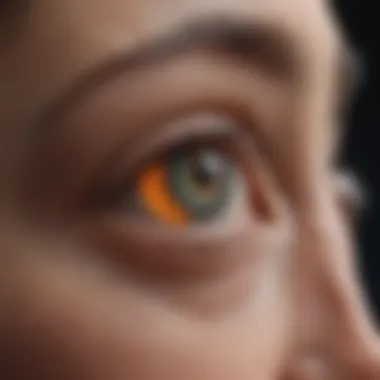
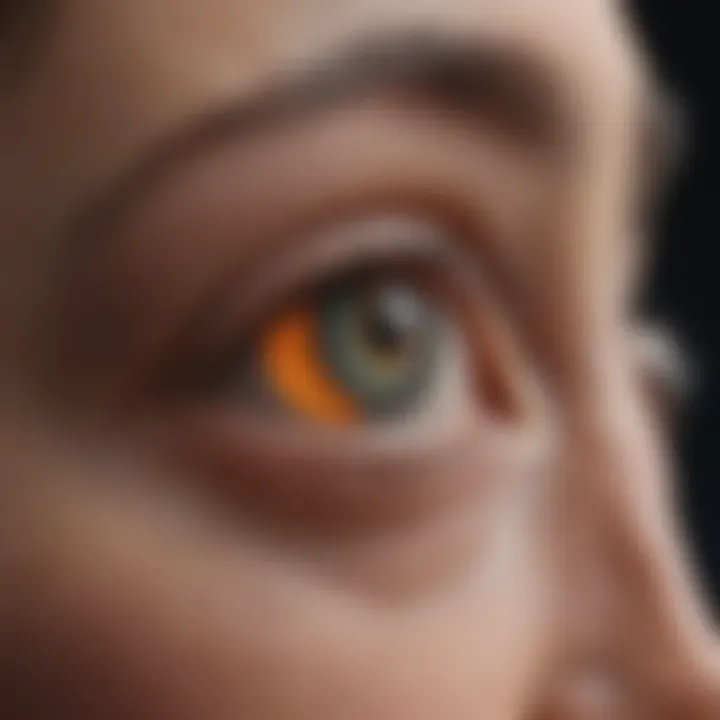
A key characteristic of electrophysiological assessments is their ability to detect changes in retinal function even when structural changes are not yet apparent on imaging modalities. This makes them an instrumental component in the early diagnosis of retinal dystrophies. A unique feature of ERG is that it can differentiate between rod and cone responses, providing detailed information pertinent to the condition.
However, it is worth noting that performing these tests requires specialized equipment and trained personnel, which may constrain their availability in some settings. Despite this, electrophysiological assessments remain a cornerstone in the diagnostic work-up of Cone Rod Retinal Dystrophy due to their depth of information.
Ultimately, the use of a combination of clinical examination techniques and advanced imaging strategies enhances the diagnostic accuracy and treatment planning for individuals with Cone Rod Retinal Dystrophy.
In summary, diagnostic approaches related to Cone Rod Retinal Dystrophy are multifaceted and require careful consideration of each strategy’s strengths and weaknesses. This comprehensive view is essential not only for identifying the condition but also for ensuring patients receive the most effective care tailored to their individual situations.
Genetic Testing and Its Implications
Understanding genetic testing is essential when it comes to cone rod retinal dystrophy, as it provides invaluable insights into the disease's underlying causes, progression, and possible treatment strategies. Rapid advancements in genetic research have opened new avenues for diagnosing and potentially treating conditions that were once deemed untouchable. This section will delve into different types of genetic tests available and highlight how interpreting these results can significantly influence patient management and their overall journey with the condition.
Types of Genetic Tests
There are various avenues for conducting genetic testing in individuals suspected of having cone rod retinal dystrophy. Each method holds distinct advantages and poses unique considerations. Here are a few prominent types:
- Single Gene Testing: This involves examining specific genes known to be associated with retinal disorders. For instance, if a particular genetic mutation is suspected based on family history, single gene testing can confirm or rule out the presence of that mutation.
- Panel Testing: Rather than focusing on a single gene, panel testing looks at multiple genes at once, typically those that have been associated with cone rod retinal dystrophy and similar conditions. This comprehensive approach facilitates a broader understanding of the genetic landscape affecting the patient.
- Whole Exome Sequencing: This is a more advanced method that sequences all the protein-coding regions of a person's genome. While this technique can provide a wealth of data, it also raises questions about the interpretation of variants of unknown significance, hence requiring careful analysis.
"Genetic testing acts as a vital roadmap for navigating the complexities of cone rod retinal dystrophy, illuminating paths that may not be immediately visible through clinical assessment alone."
Navigating these genetic testing options can feel daunting. Thus, professionals must weigh both the benefits and challenges involved in each method to provide tailored guidance for patients and families.
Interpreting Genetic Results
Interpreting genetic results is equally critical, as the information gleaned can lead to significant implications for patient care. A single genetic mutation can influence the course of the disease, underscoring the importance of skilled interpretation and follow-up.
- Understanding Mutation Significance: Once a genetic variant is identified, understanding whether this variant is pathogenic (disease-causing), benign (non-harmful), or of uncertain significance is crucial. This contextual understanding helps guide treatment decisions and prognostic discussions.
- Counseling Needs: The results of genetic testing can trigger an array of emotional reactions in patients and families. Proper genetic counseling is often necessary to help individuals process these results, discuss implications for family members, and navigate potential emotional burdens that may arise.
- Tailored Management Plans: With the clarity gained from genetic results, healthcare providers can develop personalized management plans. Some individuals may benefit from targeted therapies, while others may require close monitoring or referrals to specialists.
In summary, genetic testing and the subsequent interpretation of results are fundamental in effectively managing cone rod retinal dystrophy. As researchers continue to uncover the genetic intricacies of this condition, ongoing education and resources become vital for both patients and healthcare providers alike. This continuous dialogue is not merely about presenting data but also about transforming that data into meaningful action for impacted individuals.
Management and Treatment Options
Managing Cone Rod Retinal Dystrophy presents unique challenges, given the progressive nature of the condition. Understanding the available options is crucial for patients and caregivers alike. Proper management not only aims to slow the disease progression but also to improve the quality of life for those affected. The treatments currently discussed in the medical landscape reveal both innovative approaches and supportive strategies that can profoundly impact patients' lives.
Current Therapeutic Approaches
Photon Therapy
Photon Therapy emerges as a captivating option in the realm of retinal treatments. This non-invasive procedure utilizes specific light wavelengths to stimulate photoreceptor cells within the retina. The aim of Photon Therapy is to harness the regenerative potential of light to foster cellular health and function. The key aspect here is the modulation of cellular activity through controlled illumination, which has shown promise in preliminary studies. Its attractiveness lies in its relative ease of use and minimal side effects.
One unique feature of Photon Therapy is its adaptability in treatment settings, allowing for a personalized approach to each patient's needs. For instance, patients can often receive this therapy in outpatient settings, making it a convenient option. However, some critics point to the limited long-term data on its efficacy. While results are encouraging, it is important to consider these factors when weighing Photon Therapy as a viable option.
Gene Therapy
Gene Therapy holds a prominent position in the evolving landscape of treatments for Cone Rod Retinal Dystrophy. This approach aims to address the underlying genetic defects through the introduction of healthy genes, potentially restoring normal function to damaged photoreceptors. The crucial characteristic of Gene Therapy is its ability to target the root cause of the condition rather than merely managing symptoms, making it a particularly significant choice in this article.
What sets Gene Therapy apart is its potential for long-lasting effects. Though still largely experimental, advancements in this field have demonstrated encouraging results in clinical trials, suggesting that even severe cases can benefit. Nonetheless, accessibility and the cost associated with these therapies can be a limiting factor for many patients, which indicates a need for further improvements in resource availability.
Supportive Therapies
While therapeutics aim to combat the disease directly, supportive therapies play a vital role in enhancing everyday life for those living with Cone Rod Retinal Dystrophy. These approaches focus on improving functionality and providing guidance through the challenges posed by vision impairment.
Low Vision Aids
The inclusion of Low Vision Aids represents a pivotal advancement in providing support to individuals facing vision loss from Cone Rod Retinal Dystrophy. These devices—ranging from magnifying glasses to specialized computer software—offer practical solutions to enhance visual capabilities. A standout feature involves the customization of these aids to meet specific vision challenges, allowing users to interact more effectively with their environment.
From a practical standpoint, they can empower individuals to maintain independence in daily activities. The downside might be the learning curve involved in using some of these aids, which can put extra pressure on users. Yet, the benefits often outweigh these disadvantages, making low vision aids an essential element of comprehensive management.
Counseling and Rehabilitation
Counseling and Rehabilitation services provide crucial emotional and psychological support. The core idea is to equip patients and their families with coping strategies to adapt to the changes brought on by Cone Rod Retinal Dystrophy. These programs can include skill-building sessions tailored to managing daily challenges, making it a comprehensive approach to treatment.
One of its most important characteristics is the focus on mental health as a component of overall well-being. Feelings of frustration and isolation are common among those grappling with the disease. By fostering communication strategies and community support, counseling can alleviate some of this burden. However, the reach and quality of these services can vary substantially, indicating the necessity for improved access and standardization in the future.


"A holistic approach to management can significantly enhance the quality of life for those affected by Cone Rod Retinal Dystrophy."
In summary, the management and treatment options for Cone Rod Retinal Dystrophy offer a wide array of approaches that require careful consideration and collaboration among healthcare providers, patients, and families. From cutting-edge therapies like Photon and Gene Therapy to vital supportive measures, each option contributes uniquely to the overall treatment landscape. As research continues to evolve, so does the hope for better management strategies and enhanced quality of life for individuals affected by this retinal condition.
Emerging Research Directions
Emerging research directions in cone rod retinal dystrophy hold significant promise for understanding this complex condition at its root. By focusing on innovative techniques and modern methodologies, researchers are inching closer to identifying potential solutions and strategies for individuals affected. The rapid advancements in genetic research and diagnostics are encouraging, revealing avenues for better management approaches and possibly curative treatments.
Innovative Gene Editing Techniques
Gene editing stands as a beacon of hope in the medical field, especially concerning hereditary conditions like cone rod retinal dystrophy. Among the most pioneering methods is the CRISPR-Cas9 technology, a tool that allows researchers to precisely alter genetic sequences.
This capability has profound implications not only for correcting genetic mutations associated with retinal diseases but also for offering future patients a chance to recover vision or at least slow down the degenerative process.
- Targeting Specific Genes: With techniques like CRISPR, specific genes that play a role in phototransduction can be targeted for correction. For instance, mutations in the USA gene have been studied for intervention.
- Direct Gene Replacement: Some approaches involve replacing faulty genes with healthy ones, which could correct the underlying hereditary issue. This form of intervention could potentially restore normal function in surviving cone and rod cells.
- Safety Considerations: While the potential benefits are considerable, safety remains paramount. Much ongoing research focuses on minimizing off-target effects—unintended genetic modifications that could lead to complications.
In summary, the various gene-editing techniques are promising pathways toward therapeutic solutions. The implications extend beyond merely addressing symptoms to potentially reversing the condition itself, a future that once seemed unattainable.
Exploration of Biomarkers
Biomarkers have emerged as essential tools in understanding and managing cone rod retinal dystrophy. They serve as indicators of disease presence, progression, and responses to treatment. The exploration of biomarkers can greatly enhance diagnostic accuracy and treatment personalization.
- Identifying Progression: Biomarkers can reveal how quickly degeneration is occurring, helping to tailor treatments effectively.
- Therapeutic Targets: Many biomarkers may indicate specific pathways involved in the disease process, thus providing targets for new drug development.
- Predictive Power: The presence of certain biomarkers can give insights into the likelihood of disease progression, which can be invaluable for counseling families and planning interventions.
"The quest for effective biomarkers is akin to finding the needle in the haystack, but when successful, it can alter the landscape for treatment."
Moreover, ongoing studies are seeking to validate potential biomarkers and assess their clinical relevance. Combining these with advanced imaging and genetic testing could usher in a new era of personalized medicine in cone rod retinal dystrophy.
By focusing on these emerging directions in research, there’s a real chance to foster significant advancements in how cone rod retinal dystrophy is approached clinically and therapeutically.
Psychosocial Aspects of Cone Rod Retinal Dystrophy
Understanding the psychosocial dimensions of cone rod retinal dystrophy is crucial, as the condition does not merely affect vision; it cuts deep into the fabric of daily living, emotional health, and social interactions. People grappling with vision loss due to this retinal disease often experience a multitude of challenges that extend beyond clinical symptoms. Recognizing and addressing these elements can significantly enhance the quality of life for affected individuals, thereby adding a layer of richness and depth to the clinical aspects discussed in other sections.
Impact on Daily Living
The impact of cone rod retinal dystrophy on daily living is profound. Patients often face substantial barriers in performing routine tasks. Simple activities such as reading, driving, or recognizing faces can become challenges that impede personal independence. For instance, individuals may find themselves squinting or straining to perceive objects in low-light conditions, when they once navigated them with ease.
Some common difficulties encountered include:
- Reading and Writing: The degeneration of photoreceptor cells can make text appear blurry or difficult to decipher, affecting educational and professional productivity.
- Mobility Issues: Spatial awareness can diminish, increasing the risk of falls or accidents, particularly in unfamiliar settings.
- Social Interactions: As vision changes, social withdrawal might occur, leading to feelings of loneliness or isolation. People may hesitate to engage in gatherings, fearing the struggle to follow conversations or recognize familiar faces.
Overall, these daily challenges can breed frustration and anxiety. Addressing issues that arise from diminished independence is paramount for improved well-being and life satisfaction.
Coping Mechanisms
Coping with the psychosocial aspects of cone rod retinal dystrophy requires strength, adaptability, and often, external support. Effective coping mechanisms can facilitate a smoother navigation of the myriad challenges presented by the condition.
Some approaches that individuals may adopt include:
- Support Groups: Engaging with peers who share similar experiences can offer emotional relief and practical advice. Sharing stories can diminish feelings of isolation.
- Therapeutic Interventions: Counseling or therapy may help individuals process their feelings surrounding the loss of vision. Professional guidance can be valuable in developing coping strategies to manage changes in self-identity and independence.
- Assistive Technology: Utilizing low vision aids, such as magnifiers or screen readers, can empower individuals to regain a sense of control over daily tasks. Adapting to new technology can enhance one’s ability to engage in activities that were once enjoyable.
- Mindfulness and Relaxation Techniques: Practicing mindfulness, meditation, or yoga can help reduce anxiety and foster resilience in the face of adversity. These techniques encourage a focus on the present, providing a buffer against stress that stems from vision loss.
Closure
The conclusion serves as an essential component of understanding cone rod retinal dystrophy, summarizing the intricate web of information presented throughout the article. Distilling key findings not only reinforces knowledge but also emphasizes the complexity of the conditions, ensuring that both learners and professionals grasp the significant challenges faced by individuals diagnosed with this visual impairment.
In the realm of cone rod retinal dystrophy, the key elements piggyback on the epidemiology, the genetic mechanisms at play, and, of course, the breakdown in visual perception. It stands as a stark reminder of the importance of comprehensive care and tailored therapeutic approaches.
Summary of Key Findings
- Cone rod retinal dystrophy primarily affects the central and peripheral vision due to the gradual loss of cone and rod photoreceptors.
- Genetic mutations, including those in genes such as USA, harmonize with the pathophysiology, leading to diverse presentations.
- Diagnostic techniques like fundoscopic evaluation and optical coherence tomography are crucial for pinpointing diagnosis and severity.
- Emerging treatments, particularly involving gene therapy, present new avenues for improving patient outcomes.
Future Perspectives
The horizon for research in cone rod retinal dystrophy is not just promising but blooming with opportunities. Here are some key future considerations:
- Innovative Therapies: Investigating new gene-editing tools, such as CRISPR, shows potential to directly rectify genetic flaws, transforming the landscape of available treatments.
- Role of Biomarkers: The discovery of effective biomarkers could greatly improve early diagnosis and enable precise targeting of therapies, shedding light on disease progression.
- Increased Awareness: Advocacy and education about the condition are paramount. Raising public and professional awareness reduces stigma and encourages research funding.
"The future of treating retinal dystrophies hinges on a blend of scientific innovation and unwavering commitment."
In summary, this exploration into cone rod retinal dystrophy reveals the need for diligent research and proactive engagement from the medical community, researchers, and families. With enhanced knowledge, we can navigate the complexities of this condition and strive for improved quality of life for those affected.







